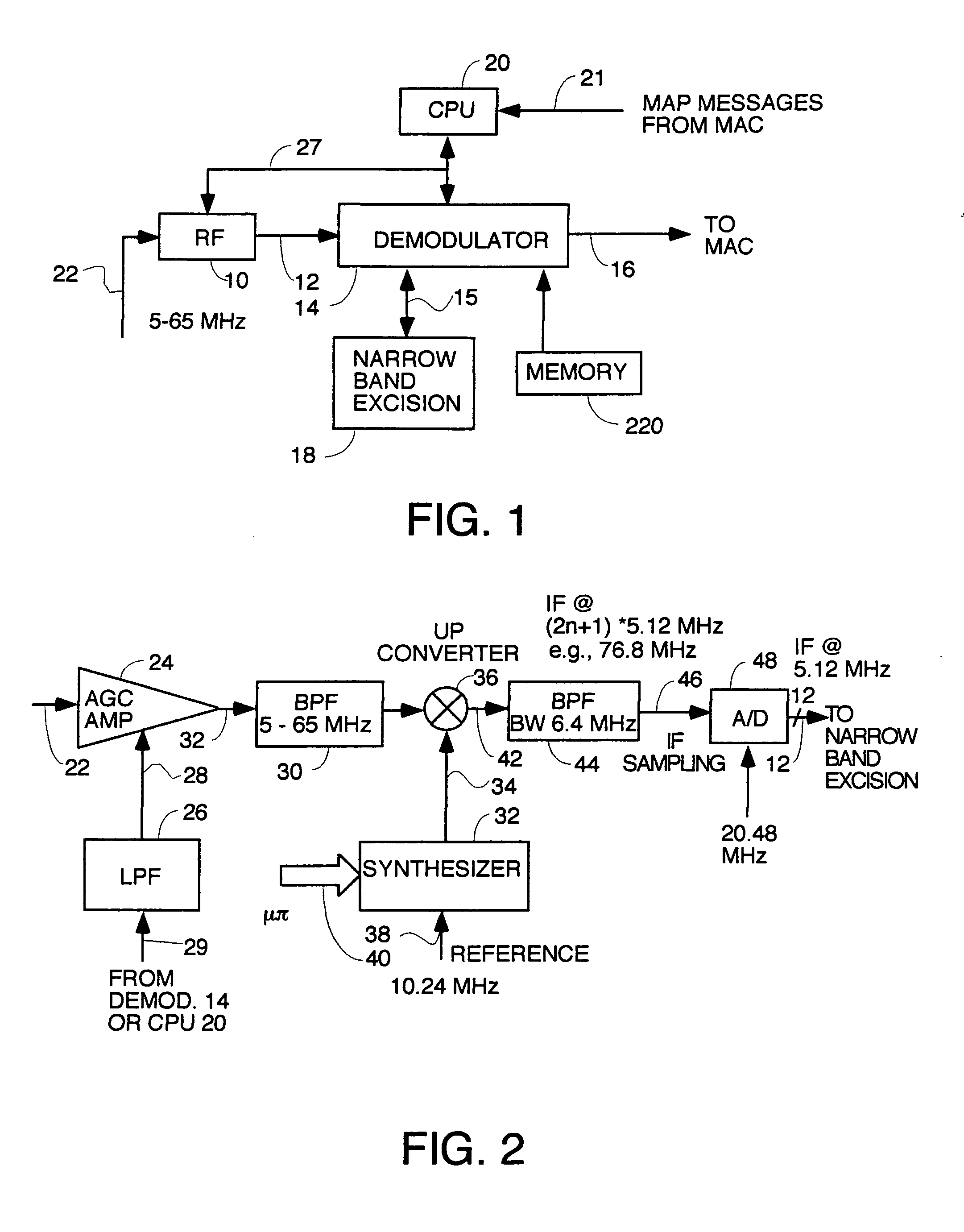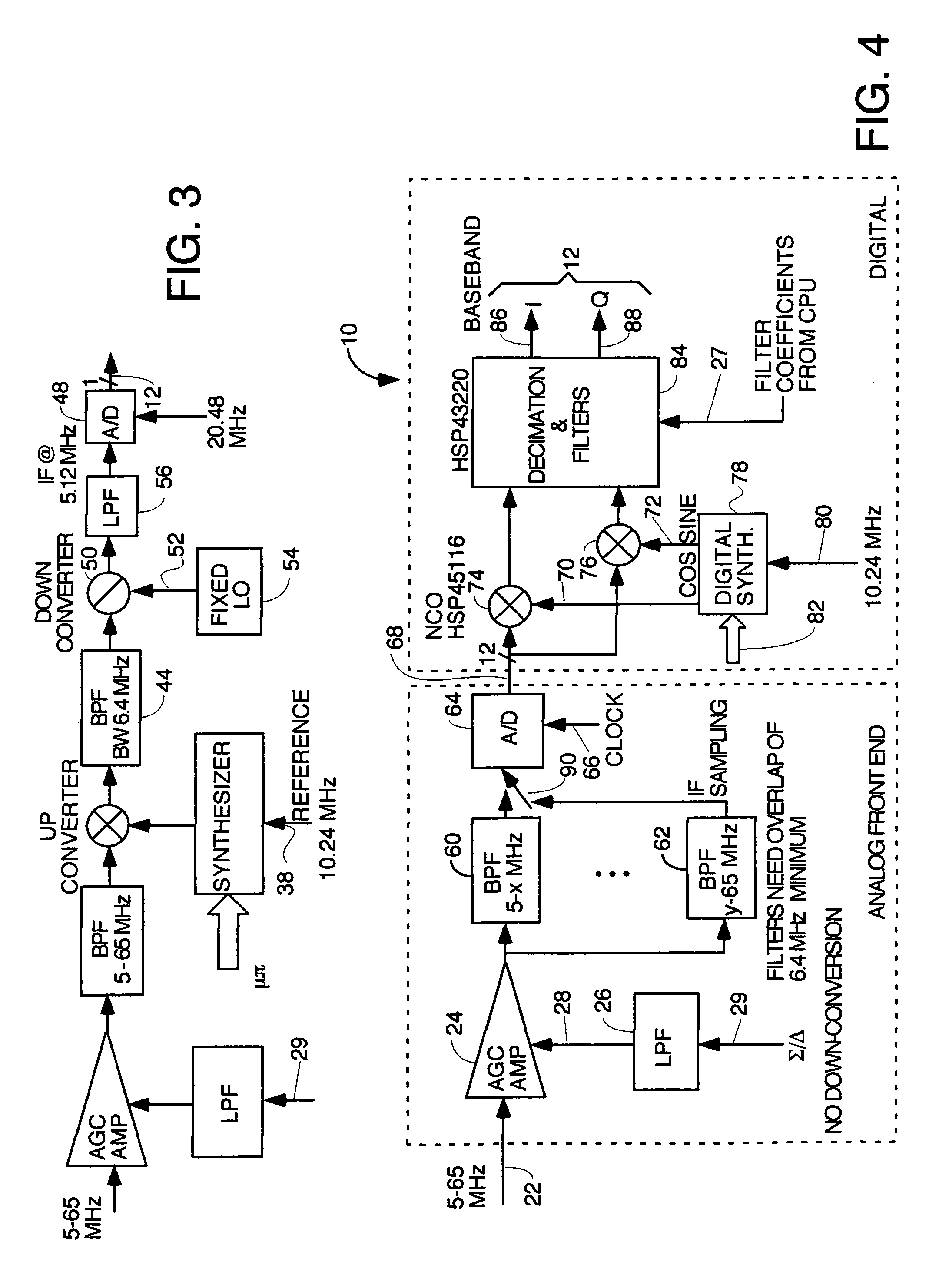Head end receiver for digital data delivery systems using mixed mode SCDMA and TDMA multiplexing
a receiver and digital data technology, applied in the field of head end receivers for digital data delivery systems using mixed mode scdma and tdma multiplexing, can solve the problems of many sources of interference which can leak into upstream signals, and the system cannot fully live up to its promised potential, so as to improve performance, improve signal-to-noise ratio, and improve performance
- Summary
- Abstract
- Description
- Claims
- Application Information
AI Technical Summary
Benefits of technology
Problems solved by technology
Method used
Image
Examples
Embodiment Construction
[0038]Referring to FIG. 1, there is shown a block diagram of the preferred form of receiver according to the teachings of the invention. The functions the various blocks must perform to be DOCSIS compatible are defined in published DOCSIS specifications which are available publicly to Cable Labs members at www.cablelabs.com. All such specifications and, specifically, SP-RFIv1.1-I05-000714 are hereby incorporated by reference.
[0039]In a typical CMTS, a receiver like the one shown in FIG. 1 would be assigned to receive data in one or more frequency channels. Typically, there would be a plurality of frequency division multiplexed (hereafter FDMA) channels transmitted upstream in a band from 5 to 65 MHz, each of which carries multiple logical channels of data from different sources. Each logical channel within an FDMA channel would be multiplexed from the other channels by SCDMA or TDMA. In the preferred embodiment, the upstream FDMA channels have selectable bandwidths of 6.4, 3.2, 1.6,...
PUM
 Login to View More
Login to View More Abstract
Description
Claims
Application Information
 Login to View More
Login to View More - R&D
- Intellectual Property
- Life Sciences
- Materials
- Tech Scout
- Unparalleled Data Quality
- Higher Quality Content
- 60% Fewer Hallucinations
Browse by: Latest US Patents, China's latest patents, Technical Efficacy Thesaurus, Application Domain, Technology Topic, Popular Technical Reports.
© 2025 PatSnap. All rights reserved.Legal|Privacy policy|Modern Slavery Act Transparency Statement|Sitemap|About US| Contact US: help@patsnap.com



